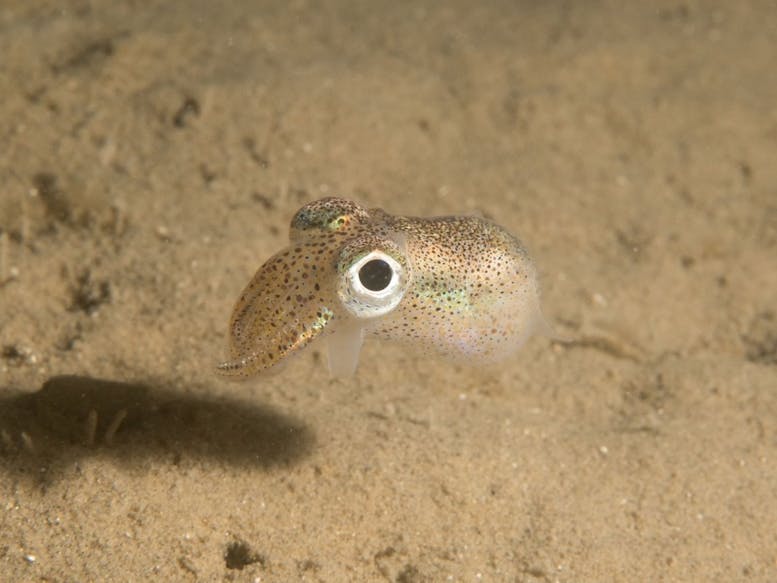Selsey's Little Cuttlefish

During the year it is common to find cuttlefish bones washed ashore, these are all that remain of the common cuttlefish. Anya Frampton introduces a local cuttlefish who leaves no such trace, the little cuttlefish- Sepiola atlantica.

Just as the name suggests this Selsey resident is much smaller, growing to a maximum size of 60mm, the body is usually just 20mm long. They belong to a smallest group of molluscs, the cephalopods, made up of octopus, squid, and cuttlefish. They have a rounded body, oversized eyes, and eight to 10 arms/tentacles around their mouth. Their fins do not extend around the sides of their body but form two rounded lobes at the back.
Small they might be, but they come with some amazing abilities. They are masters of camouflage being able to change the colour, pattern and even texture of their body to go unnoticed by predators and prey alike. They can release black ink to cover a retreat but given their size it is an exceedingly small amount of ink that will disperse easily. Therefore, speed can be the key, so luckily they have jet propulsion, provided by expelling water to propel them backwards at high speed. The little black puff is all you may see!
They love Selsey's sandy areas we have off the beach and prefer to bury themselves in the sand so just their large eyes stick out. They will use their tentacles to wipe any sand from their eyes and wait…patiently…avoiding predators and ready to pounce on the small crustaceans that pass by. When you are swimming over the sandy bottom close to the shore watch for little eyes looking at back at you. They are here all year round but rise in numbers in April, July and August... happy Cuttlefish hunting.
If you have any questions about the Little Cuttlefish found off Selsey, then contact Anya Frampton, Selsey's resident SSI Marine Ecology Instructor at Mulberry Marine Experiences